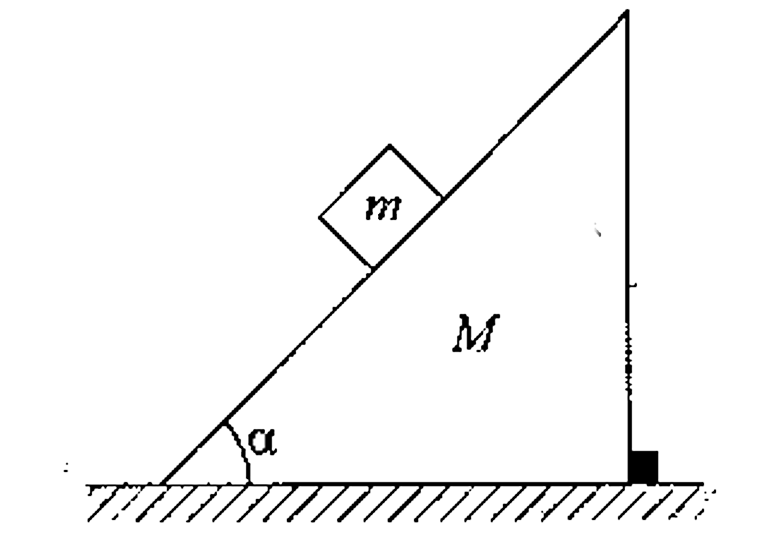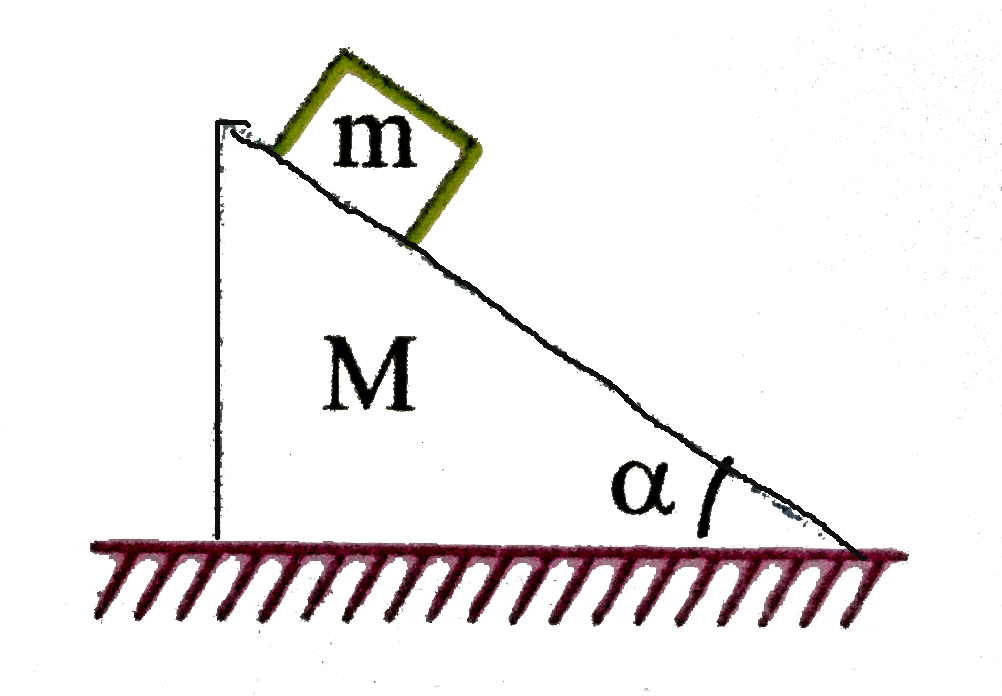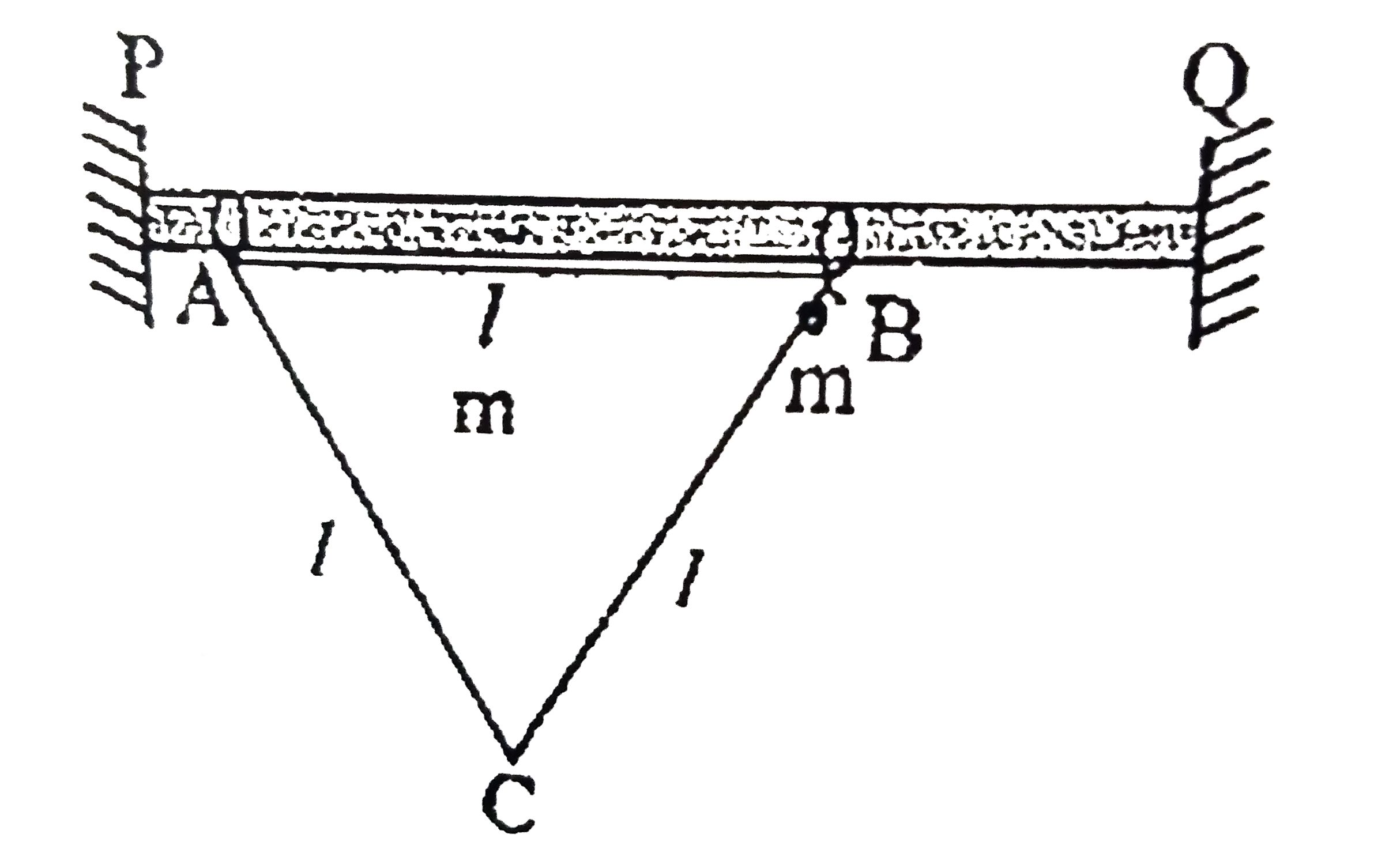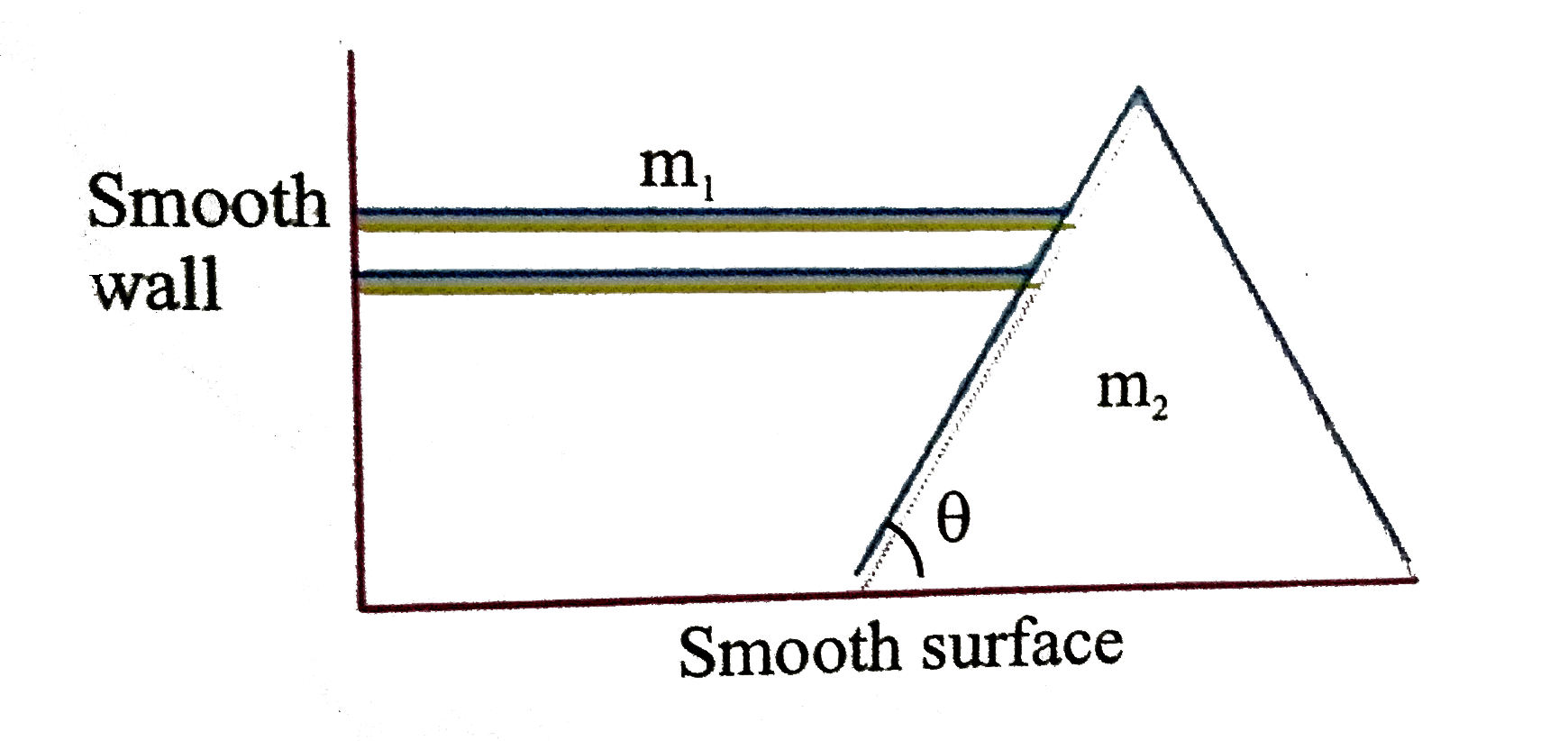A heavy mass m slides down a triangular prism of mass M . The prism lies on a horizontal surface and can move along it without friction . What will be the direction of motion of m if the inclination of the hypotenuse of the prism is α with the horizontal ?
Step by step video & image solution for A heavy mass m slides down a triangular prism of mass M . The prism lies on a horizontal surface and can move along it without friction . What will be the direction of motion of m if the inclination of the hypotenuse of the prism is alpha with the horizontal ? by Physics experts to help you in doubts & scoring excellent marks in Class 11 exams.
Updated on:21/07/2023Topper's Solved these Questions
- LAWS OF MOTION, FREE BODY DIAGRAMBOOK - NN GHOSHCHAPTER - LAWS OF MOTION, FREE BODY DIAGRAMEXERCISE - Exercise (A)
27 Videos
- LAWS OF MOTION, FREE BODY DIAGRAMBOOK - NN GHOSHCHAPTER - LAWS OF MOTION, FREE BODY DIAGRAMEXERCISE - Exercise (B)
34 Videos
- KINETIC THEORY OF GASESBOOK - NN GHOSHCHAPTER - KINETIC THEORY OF GASESEXERCISE - All Questions
24 Videos
- MOMENT, TORQUE, EQUILIBRIUM OF BODIESBOOK - NN GHOSHCHAPTER - MOMENT, TORQUE, EQUILIBRIUM OF BODIESEXERCISE - Exercises
33 Videos
Similar Questions
Prism 1 of mass m1 and width angle α (see figure) rests on a horizontal surface. Bar 2 of mass m2 is placed on the prism. Assuming the friction to be negligible, find the acceleration of the prism.

View SolutionA body with a mass m slides along the surfac of a trihedral prism of mass M, whose upper plane is inclined at an angle α to the horizontal. The prism rests on a horizontal plane having a vertical ledge at the rear edge of the prism to keep it at rest as show in figure-2.69. Find the force exerted by the base of the prism on the plane ? Also find the force exerted by ledge on prism.

[Mg+mgcos2α,mgsinαcosα]
View Solution
Knowledge Check
In the figure heavy mass m moves down the smooth surface of a wedge making an angle α with the horizontal. The wedge at rest t=0 is on a smooth surface. The mass of the wedge is M the direaction of motion of the mass m makes an angle β with the horizontal then, Tanβ is
 .AmMtanαBMmtanαC(1+mM)tanαD(1+Mm)tanα
.AmMtanαBMmtanαC(1+mM)tanαD(1+Mm)tanαA solid homogenous sphere of mass M and radius r is moving on a rough horizontal surface, partly rolling and partly sliding. During this kind of motion of this sphere
Atotal kinetic energy is conservedBthe angular momentlim of the sphere about the point of contact with the plane is conservedConly the rotational kinetic energy about the centre of mass is conservedDangular momentum about the centre of mass of conserved.A solid homogeneous sphere is moving on a rough horizontal surface, partly rolling and partly sliding. During the king of motion of the sphere.
Atotal kinetic energy is conservedBthe angular momentum of the sphere about the point contact with the plane is conservedConly the rotational kinetic energy about the centre of mass is conservedDangular momentum about the centre of mass is conserved
A rectangular box lies on a rough inclined surface . The coefficient of friction between the surface and the box is μ. Let the mass of the box be m .
(a) At what angle of inclination θ of the plane to the horizontal will the box just start to slide down the plane ?
(b) What is the force acting on the box down the plane , if the angle of inclination of the plane is increased to α>θ ?
(c) What is the force needed to be applied upwards along the plane to make the box either remain stationary or just move up with uniform speed ?
(d) What is the force needed to be applied upwards along the plane to make the box move up the plane with acceleration a ?
View SolutionA uniform cube of mass m and edge a moves on a horizontal surface along the positive x-axis, with initial velocity v0. Then
View SolutionA rigid triangular frame ABC of mass m is hanging from a rigid horizontal rod PQ. The frame is constrained to move along horizontal without friction. A bead of mass m is released from B that moves along BC. Displacement of frame when bead reaches C is

View SolutionA man of mass m is standing on a stationary flat car of mass M. The car can move without friction along horizontal rails. The man starts walking with velocity v relative to the car. Work done by him
View SolutionA horizontal bar of mass m1 Prism of mass m2 can move as shown. There is no friction at any contact point. During the motion the length of the rod is always horizontal Now, magnitude valuse of
 .
.
View Solution